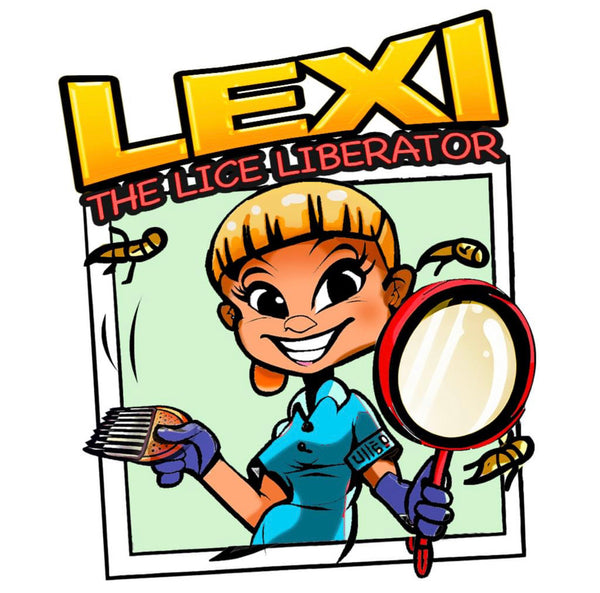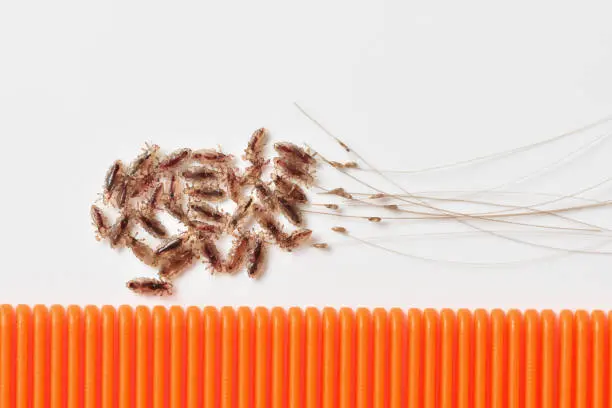Introduction to Head Lice and Common Misconceptions
Head lice make everyone uneasy. But to tackle them, you need the right info. First off, head lice are tiny parasites that love human hair. They’re not a sign of being dirty. Anyone can get them, especially kids sharing stuff like hats or brushes. There’s a ton of myths out there. Like, only dirty people get lice or lice can jump from head to head. Both are false. Lice can’t jump or fly; they only crawl. Getting lice is not about cleanliness; it’s about close contact. Also, pets can’t give you lice; these critters are picky and only like humans. Knowing what’s true helps you fight lice better and keeps you from stressing over myths.
Myth 1: Only Children Get Head Lice
Let’s clear the air: head lice aren’t picky guests—they’re just as likely to crash at an adult’s scalp party as they are at a kid’s. The whole “only children get head lice” story? False. Completely false. Anyone with hair can host these tiny pests, no matter their age. Fact is, close contact or sharing personal items like hats or hairbrushes with someone who has head lice is how these critters spread. They don’t care if you’re six or sixty—head lice see hair, think “home sweet home,” and move right in. So, let’s ditch this myth and stay vigilant, Chicago.
Myth 2: Head Lice Indicate Poor Hygiene
This myth couldn’t be more wrong. Head lice don’t care if hair is clean or dirty; they just need a human host to survive. Experts confirm this, making it clear that getting lice isn’t a sign of bad hygiene or a dirty home. In fact, lice can thrive in clean hair because it’s easier for them to move around and lay their eggs. So, remember, if your child comes home with lice, it’s not because they’re dirty. It happens to anyone and has nothing to do with how clean you or your home are.
Expert Head Lice Advice for Chicago Parents
Chicago parents, listen up! Head lice can feel like a nightmare, but there’s a lot of misinformation out there. First off, head lice don’t care about hair cleanliness. Yep, you heard right. Lice are just as likely to show up in clean hair as in not-so-clean hair. It’s about contact, not cleanliness. Sharing hats, brushes, or getting cozy during a selfie can invite these critters onto your child’s scalp. Now, let’s tackle treatment. You might think over-the-counter solutions are your only option, but there’s more to the story. Sometimes, these treatments don’t cut it because lice can become resistant. Don’t panic, though. Professional treatment options that are safe and effective do exist. Also, a big myth: the idea that lice can jump or fly from head to head. Not true—they can only crawl. So, advice number one: Limit direct head-to-contact as much as possible. And remember, lice are pesky, but they don’t carry diseases. Keeping calm and informed is your best weapon in dealing with them. Lastly, don’t go it alone. There’s help out there, from professional lice removal services to school resources. Let’s keep our heads clear, both from lice and from myths.
Myth 3: Home Remedies Are the Best Solution
It’s a common belief that home remedies can knock out head lice for good. People swear by mayonnaise, tea tree oil, or even vinegar, thinking these kitchen staples are the key to freedom from itchy scalps. But let’s get real for a second. When it comes to head lice, these DIY treatments might seem promising, but they often fall short. Experts say that while some home remedies might make lice sluggish, they’re unlikely to get rid of them completely. The truth is, lice are tough. They’ve been around for centuries, getting cozy in human hair, and they’re not easily fooled by a dollop of mayo or a splash of vinegar. To really kick them to the curb, you’re better off calling the professionals like Lexi The Lice Liberator. Lexi is the best, unlike the hit-or-miss results from home concoctions. So, before you raid your pantry for a solution, remember that sometimes the old “natural” route isn’t the best assault plan against these pesky invaders.
How to Effectively Treat Head Lice
To kill head lice, you’ve got to be thorough. Forget the old wives’ tales; real success comes from using treatments backed by science. Professional lice removal services are the best way. Essential is combing out lice and nits with a fine-toothed metal lice comb. This step is non-negotiable. Also, washing bedding and clothing in hot water is crucial. Heat kills lice. Forget the idea of shaving heads or slathering mayonnaise. They don’t work well and are unnecessary. Focus on professional services and diligent cleaning. That’s how you win the fight against head lice.
Myth 4: Head Lice Can Transmit Diseases
Head lice freak a lot of people out, and one big myth making rounds is that they can spread diseases. Let’s set the record straight—they don’t. The Centers for Disease Control and Prevention (CDC) confirms head lice are not known to carry or transmit any diseases. These tiny pests are a nuisance, no doubt, but calling them disease spreaders is just not accurate. Sure, itching from their bites can lead to skin infection if scratched too much, but lice themselves? They’re not handing out viruses or bacteria. So, next time someone tries to scare you with the idea of head lice being dangerous beyond the itch and the ick, tell them it’s just not true. Keep calm and comb on, Chicago parents.
Preventing Head Lice: Tips and Tricks
To keep those pesky lice at bay, start with regular hair checks. Yep, especially after your kid’s play dates or school sessions. Get yourself a fine-toothed lice comb and make it your new best friend. Run it through wet hair, looking for nits or live lice. It’s like searching for tiny invaders who love clean hair – so, the myth that lice prefer dirty hair? Total nonsense.
Now, talking about cleaning, wash your child’s clothes, hats, and beddings in hot water if you even hear whispers of a lice outbreak. Lice can’t stand the heat, so cranking up the temperature will show them who’s boss.
But remember, sharing is not always caring. Lice are opportunistic and will hitch a ride on combs, brushes, and even those cozy hats kids love to swap. So, encourage your kids to keep their hats to themselves and maybe label their personal items to avoid mix-ups.
And here’s the kicker, lice prevention sprays? Most folks think they do the trick, but the truth is, keeping things clean and not sharing personal stuff gets you most of the way there. If you’re aiming for prevention, focus on regular checks and hygiene habits instead of relying solely on products.
In essence, preventing head lice doesn’t need to be complicated. Consistent checks, teaching your kids a few ground rules about personal items, and good, old-fashioned cleanliness will do the trick. Stay vigilant, and those lice won’t know what hit them.
Myth 5: Lice Can Jump from Head to Head
Lice can’t jump. That’s right, despite what you might have heard, lice can’t leap or fly from one head to another. They’re not tiny kangaroos. They get around by crawling. This means for a lice infestation to spread, there has to be direct head-to-head contact. So, when kids are playing, hugging, or taking selfies together, that’s when lice get their chance to move in. Remember, keeping some distance and not sharing hats, scarves, or headphones can cut down the chances of these critters making a jump—not literally, of course—to someone else’s scalp.
Conclusion: Staying Informed and Prepared
Knowing the truth about head lice helps you fight them off effectively. Remember, head lice are more of a nuisance than a health hazard. They don’t carry diseases. Proper treatment and regular checks are your best defense. Don’t fall for myths. Lice aren’t a sign of poor hygiene, and they can’t jump from head to head. Stick to facts. If you’re dealing with an infestation, call Lexi The Lice Liberator. Keeping calm and informed makes all the difference. Stay prepared, Chicago parents, and you’ll have the upper hand against head lice.


